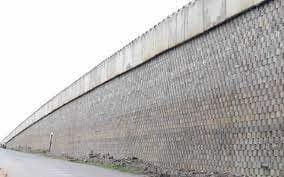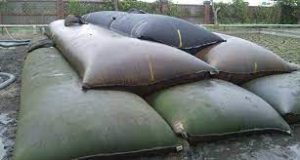Can I use Landscape Fabric for Erosion Control?
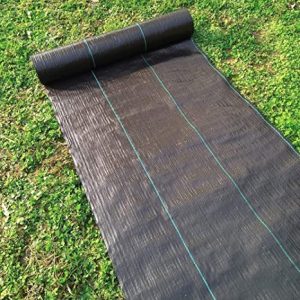
Landscape fabric is a solid sheet created of synthetic or recyclable materials that gardener and landscapers apply as ground cover on different types of terrain to control weeds. Gardeners can lay landscape fabrics close to gardens and plants to avoid weeds or cover rocky areas. There are two categories of landscape fabrics: woven and non-woven.
Table of Contents
Landscape Fabric’s objective
The main objective of landscape fabrics is to stop weed growth. You can situate woven landscape fabric between rows of plants in a nursery to prevent weeds from growing around your flower beds. Non-woven landscape fabrics work best for permanent spaces, like rock gardens or shrub gardens, preventing them from weeds and the components with their durable, semi-permeable material.
Prime Types of Landscape Fabric
The two prime types of landscape fabrics are woven and non-woven.
The individual fiber of linen or polypropylene is woven With woven landscape fabrics. These tend to last longer than non-woven landscape fabrics in virtue they are more tightly entwined. This category of fabric is ideal for covering garden beds, shrubs, and trees because of the little holes in the material that allow water and nutrients to pass through onto the soil.
Composed of polypropylene or polyester, non-woven landscape fabrics work best for rock gardens because the material mostly avoids water and air from seeping onto the rocks.
Pros of Utilizing Landscape Fabric for Erosion Control
Effective Weed Control
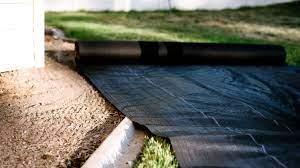
When used correctly, landscaping fabric effectively solves persistent weeds that spread all over the garden. It discourages weed growth by protecting weeds from getting the sunlight they need for photosynthesis. Since landscaping fabric can be laid over a greater area, you can kill weeds in different parts of the garden in one go.
Affordable
Landscaping fabric bought in bulk isn’t exactly cheap but the material is much more durable, it will last for years and years. To situate things in perspective, how much money do you spend on herbicides to prevent weed growth? Applying chemicals to the soil is not just contributing to soil and water pollution, but it’s as well quite expensive. This goes especially for regions that are naturally grassy and inclined to weeds. You have to apply herbicides daily to control the spread of weeds.
Avert Soil Erosion
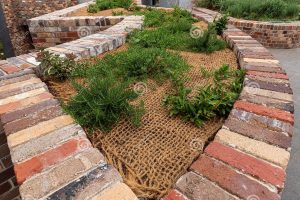
Is your garden inclined to soil erosion? Sloped fields and places that get loads of rain have a serious erosion problem, which makes planting crops tough amending the soil is fairly problematic in these areas because it only takes a rainstorm to wash away all your hard work! The rushing rainwater tends to wash the soil off, together with the nutrients that plants need to thrive.
You can utilize landscaping fabric to protect your garden from soil erosion. The material is absorptive and capable to let moisture and air penetrate the landscaping fabric at the time of holding the soil in place.
Eco-Friendly
Landscaping fabric is remarkably environmentally friendly. It takes 5 to 10 years ahead of the material degrades so you can re-use the landscaping fabric several times. Most landscaping fabrics are created from sustainable and recycled materials as well, which included the eco-friendliness of these products.
Cons of Utilizing Landscape Fabric for Erosion Control
Could alter Plant Growth
Using the wrong category of landscaping fabric may affect plant growth and in some situations, prohibit future plant growth. This can be simply prevented by learning all about the different landscaping fabric materials that are available on the market and recognizing the best material that suits your plants.
Might Degrade Soil Quality
Since the landscaping fabric functions as a physical barrier to kill weeds, the material as well inhibits the breakdown of garden matter. Because the ground is coated, breeding the plants takes work, which can be a nuisance for plants that requires a lot of nutrients.
Installation of Landscape Fabric
Landscaping fabrics suit a variety of distinctive landscape designs. Landscapers can line perennial beds with landscape fabrics to make a weed block or place them underneath stone pavers to stabilize the soil. Here’s a step-by-step instruction on how to install landscape fabric:
1. Prepare the site. Utilizing a garden hoe, exclude the vegetation in the area, containing all of the weeds, leaves, grass, and plants.
2. Prepare the soil. Eliminate any rocks or other sharp objects in the field that could rip the fabric. Applying a garden rake or your hands, settle out the soil. In case there are any remaining plant roots, just pull them out.
3. Lay the landscape fabric. Lay the landscaping fabric below the flat. Purposing scissors or a knife, crop the excess fabric so it fits your desired area.
4. Assure the fabric. Utilizing landscape fabric staples, secure the fabric to the ground. Spread the staples out evenly all over the edges of the fabric. Set the staples in the ground with a hammer so they hold the top of the fabric in place.


